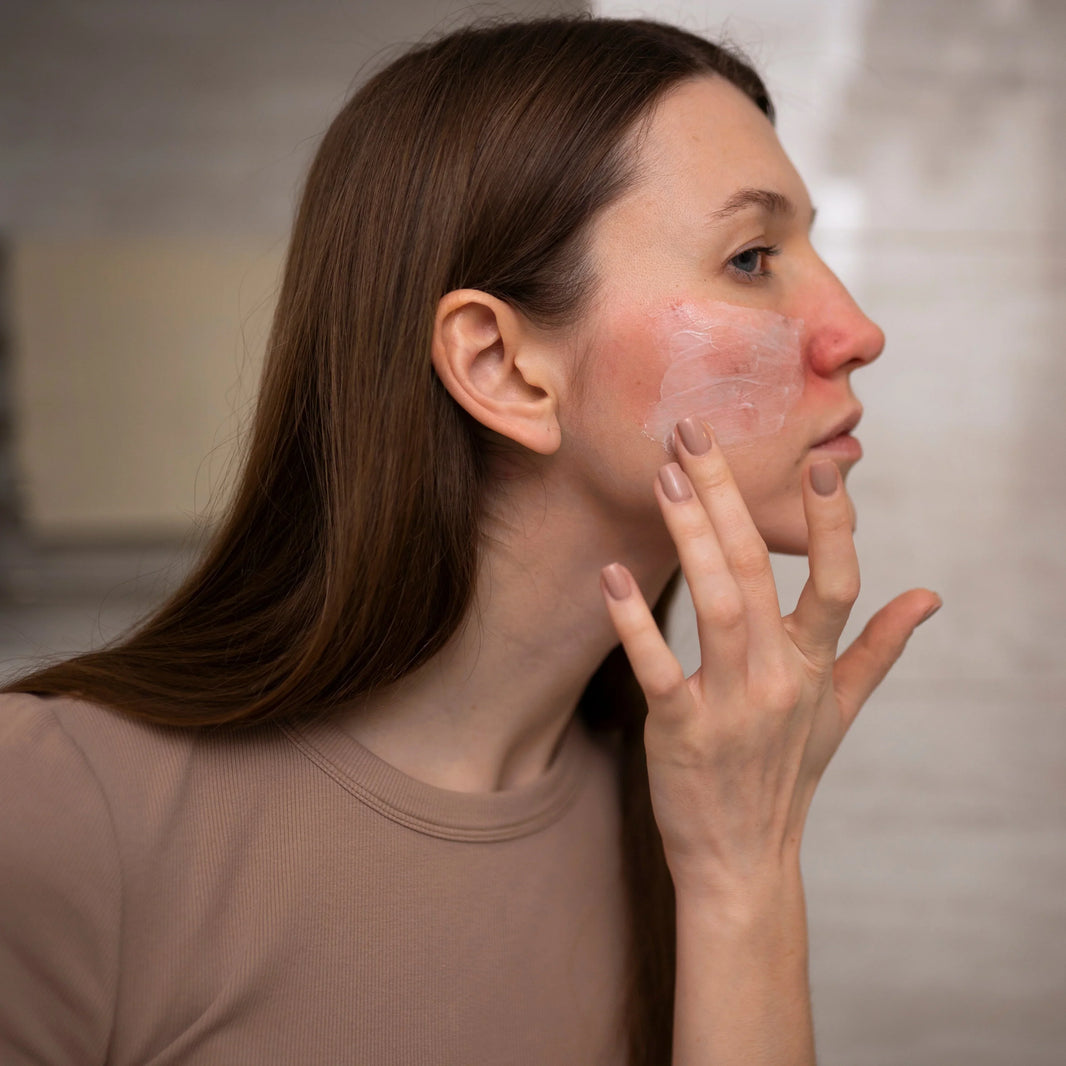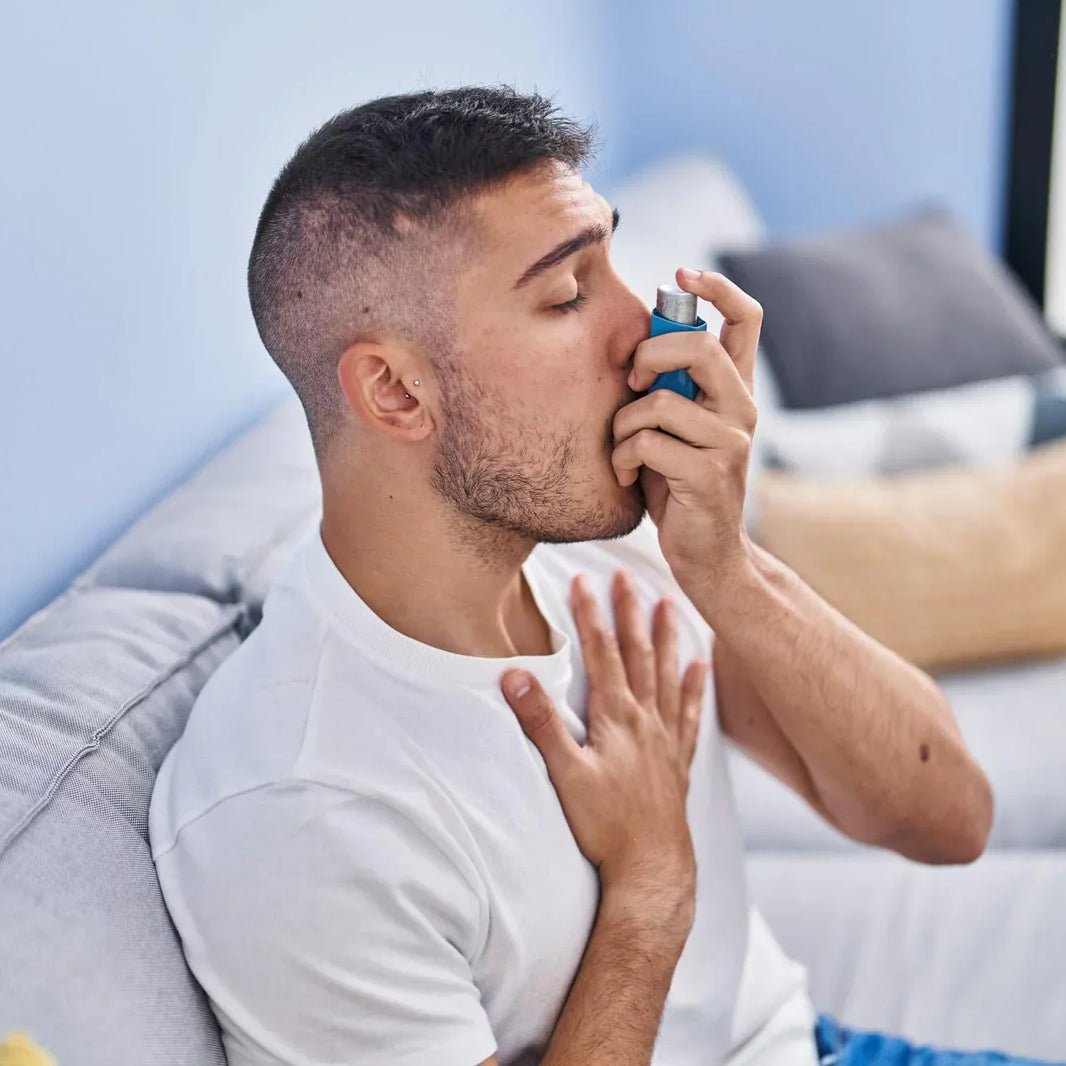Prostate health encompasses the proper physiological functioning of the prostate gland, involving complex anatomical relationships, molecular pathways, and lifestyle factors that collectively maintain glandular integrity and prevent pathological conditions. The prostate gland plays a critical role in male reproductive health through its contribution to seminal fluid production and its anatomical connection to the urinary system. Research indicates that prostate health is influenced by various factors including anatomical relationships, molecular signaling pathways, hormonal regulation, lifestyle choices, and environmental exposures. Understanding these complex interactions provides insight into effective prevention strategies and interventions to maintain optimal prostate function throughout life.
Anatomical and Physiological Foundations of Prostate Health
The anatomical relationship between the prostate and surrounding structures significantly influences prostate health. The prostate gland's close proximity to the rectum represents a functional-anatomic arrangement that appears to benefit prostate health. This proximity enables lower bowel distention to compress the prostate's lateral side, facilitating gradual drainage of prostatic fluid, which may potentially lower cancer risk1. This drainage mechanism is complementary to the more rapid drainage that occurs following ejaculation, suggesting multiple physiological mechanisms exist to maintain proper prostatic fluid movement1. The natural drainage function appears critical, as it prevents fluid stasis that could otherwise contribute to inflammatory processes or create conditions favorable for cellular abnormalities.
The prostate's physiological function is tightly regulated by hormonal influences, primarily androgens, which drive both normal growth and potential pathological conditions. Androgen receptor signaling is a fundamental mechanism controlling prostate development, maintenance, and potentially carcinogenesis912. This signaling pathway represents a primary target for therapeutic interventions in prostate cancer treatment, particularly through androgen deprivation therapy. However, this same pathway is essential for normal prostate function, highlighting the delicate balance required for maintaining prostate health.
Molecular Mechanisms and Regulatory Pathways
Multiple molecular pathways govern prostate cell function, with the PI3K/AKT signaling pathway playing a particularly crucial role. Research has demonstrated that this pathway regulates cell growth, survival, and motility in both normal and cancerous prostate epithelial cells8. Interestingly, clusterin (CLU), a chaperone-like protein often upregulated after various prostate treatments, enhances AKT2 phosphorylation by downregulating phosphatase PHLPP1, which normally dephosphorylates AKT28. This mechanism dramatically increases prostate cell motility, suggesting its importance in both normal prostate function and potential malignant transformation processes.
The regulatory control of this pathway is maintained through a complex interplay between phosphatases, particularly PTEN (phosphatase and tensin homolog) and PHLPP1 (PH domain leucine-rich repeat-containing protein phosphatase 1)8. When PTEN is heavily phosphorylated at the inhibitory site S380, it contributes to hyperactivation of AKT signaling, which can dramatically enhance the migratory behavior of prostate epithelial cells8. This molecular circuit represents a critical regulatory mechanism for prostate tissue homeostasis and potential target for intervention in pathological conditions.
Emerging research has revealed an unprecedentedly high concentration of intracellular vitamin C in prostatic tissues compared to other tissues in the body17. This extraordinary vitamin C content appears to influence DNA epigenetic patterns in prostate cells, with uniquely high levels of 5-(hydroxymethyl)-2'-deoxyuridine and significant increases in 5-formyl-2'-deoxycytidine17. These findings suggest vitamin C may play a specialized role in prostate physiology, potentially through its function as a free radical scavenger and its essential role in enzymes like TET proteins involved in DNA demethylation processes. Such mechanisms may be particularly relevant to male fertility and overall prostate health maintenance17.
Hormonal Regulation and Cell Cycle Control
The convergence of hormone regulation and cell cycle control represents a fundamental aspect of prostate physiology and potential tumor development. Androgen receptor activation by testosterone and dihydrotestosterone drives normal prostate function but can also contribute to pathological conditions when dysregulated911. This hormonal signaling influences cell proliferation, differentiation, and apoptosis within prostate tissue, highlighting the importance of maintaining proper hormonal balance for prostate health.
Prostate specific antigen (PSA), a serine protease produced almost exclusively by prostate epithelial cells, serves as both a biomarker for prostate conditions and plays a functional role in prostate physiology216. PSA derivatives like the Prostate Health Index (phi) and phi density (PHID) have emerged as more specific diagnostic tools for prostate cancer detection, demonstrating higher specificity than PSA alone2. These biomarkers reflect underlying molecular changes in the prostate and can help differentiate between normal prostate function and pathological states.
Bone-Prostate Relationship
A distinctive aspect of prostate health involves its relationship with bone tissue. Prostate cancer commonly metastasizes to the skeleton, and androgen deprivation therapy used in prostate cancer treatment can negatively impact bone strength1215. The normal process of bone remodeling, regulated by osteoblasts, osteoclasts, and osteocytes, can be subverted by prostate cancer to promote metastatic growth12. This interrelationship underscores the importance of considering bone health as an integral component of overall prostate health, particularly in older men or those undergoing prostate cancer treatment.
The biological mechanisms that sustain bone development and homeostasis, such as regional hypoxia or matrix-embedded growth factors, can be hijacked by bone metastatic prostate cancer12. These shared molecular pathways suggest that interventions targeting bone health might also benefit prostate health, particularly in preventing or managing prostate cancer progression. The bidirectional relationship between these tissues represents an important consideration in comprehensive approaches to prostate health maintenance.
Evidence-Based Lifestyle Interventions
Physical activity has emerged as a well-supported intervention for maintaining prostate health. High-intensity exercise has been shown to reduce prostate cancer risk by 10-30% and improve outcomes by enhancing cardiovascular fitness and quality of life in those with prostate conditions4. Exercise appears to work through multiple mechanisms, including hormonal regulation, improved metabolic health, and reduced inflammation4. Both aerobic and resistance training demonstrate benefits, though optimal prescription parameters remain an area of active research.
Dietary modifications represent another evidence-based approach to enhancing prostate health. Polyphenol and fiber-rich meals contribute to improved prostate drainage by promoting voluminous stool formation and increased gastrointestinal transit1. These dietary components may be particularly important for men with limited sexual activity, as they provide an alternative mechanism to facilitate prostate drainage beyond ejaculation1. Additionally, comprehensive lifestyle changes including diet, physical activity, and stress reduction have shown promise in improving both disease outcomes and mental health in men with prostate cancer5.
The frequency of ejaculation appears to be a significant factor in maintaining prostate health through its effect on prostate drainage1. Regular ejaculation provides a rapid drainage mechanism that complements the more gradual drainage facilitated by rectal distention against the prostate1. This physiological process helps prevent fluid stasis and potential inflammatory conditions within the prostate. For men who are voluntarily abstinent or have limited sexual activity, the alternative drainage mechanisms facilitated by dietary factors may take on increased importance1.
Emerging and Less Proven Approaches
Traditional herbal medicines represent an area of ongoing investigation for prostate health. Network pharmacology analysis suggests that Rhizoma Polygonati (RP) extract may inhibit prostate cancer cell proliferation through PI3K-AKT pathways, which are essential for both benign prostatic hyperplasia and prostate cancer19. When combined with goji extract, RP appears to induce multiple pathways including androgen and estrogen response, kinase regulation, apoptosis, and prostate cancer signaling19. While these findings are promising, more rigorous clinical evidence is needed before these approaches can be widely recommended.
Environmental factors, including neighborhood conditions, may influence prostate health through mechanisms that are only beginning to be understood. Research has found associations between neighborhood environments, particularly greenspace exposure (measured by the Normalized Difference Vegetation Index), and lower levels of post-atrophic hyperplasia in prostate tissue20. Similarly, measures of neighborhood socioeconomic status and racial/income segregation have shown associations with lower tumor corpora amylacea, suggesting that broader social and environmental factors may influence histopathological features of prostate tissue20. These emerging findings point to potential interventions at the community level that might complement individual approaches to prostate health.
The Prostate Health Index (phi) and related metrics like phi density (PHID) represent advanced diagnostic tools for assessing prostate health status, particularly for cancer detection213. Research indicates that at 90% sensitivity, PHID with a cut-off value of 0.54 demonstrated the highest specificity of 35.7% for overall prostate cancer detection2. These tools integrate multiple biomarkers to provide a more comprehensive assessment than traditional PSA testing alone, potentially reducing unnecessary biopsies while improving detection of clinically significant disease.
Racial Disparities in Prostate Health
Prostate health outcomes exhibit significant racial disparities, particularly affecting African American men. These disparities reflect a complex interplay of non-biological and biological factors that increase susceptibility to aggressive prostate cancer compared to Caucasian men618. Socioeconomic factors interact with genetic polymorphisms, mutations, and epigenetic changes that influence fundamental cellular processes including proliferation/death balance, androgen pathway function, and immune responses6. This interconnection between social determinants and biological mechanisms underscores the need for comprehensive, culturally sensitive approaches to prostate health promotion that address both medical and social aspects of care.
Conclusion
Prostate health represents a multifaceted physiological state maintained through complex interactions between anatomical relationships, molecular pathways, hormonal regulation, and lifestyle factors. The evidence strongly supports the benefits of regular physical activity, dietary modifications rich in polyphenols and fiber, and regular prostatic drainage through ejaculation or complementary mechanisms facilitated by bowel function. Molecular targets including the PI3K/AKT pathway, androgen receptor signaling, and vitamin C metabolism offer promising avenues for intervention and future research.
While traditional herbals and environmental modifications show emerging potential, they require further investigation before strong recommendations can be made. The development of advanced diagnostic tools like the Prostate Health Index continues to improve our ability to assess prostate health status and detect pathological conditions earlier. Future research should focus on optimizing exercise prescriptions across diverse populations, understanding long-term effects of various interventions, and developing personalized approaches to prostate health maintenance that consider individual risk factors, lifestyle preferences, and cultural contexts. As our understanding of prostate physiology continues to evolve, integrated approaches that address multiple aspects of prostate health simultaneously will likely provide the greatest benefit.
Citations:
- https://www.semanticscholar.org/paper/d535686d68a7255874916ba60d3efd0b03316038
- https://www.ncbi.nlm.nih.gov/pmc/articles/PMC7396080/
- https://pubmed.ncbi.nlm.nih.gov/27119161/
- https://www.semanticscholar.org/paper/1f4d4c7c8c7d49242d35df8253d3fbab38d67284
- https://www.ncbi.nlm.nih.gov/pmc/articles/PMC10268595/
- https://www.semanticscholar.org/paper/ec10a59e1183bf1ab95293ded94ba418cbde7dca
- https://www.semanticscholar.org/paper/7ffa49c183365ac6b18ed062a02c47c81323ddc7
- https://pubmed.ncbi.nlm.nih.gov/30565691/
- https://www.ncbi.nlm.nih.gov/pmc/articles/PMC10854717/
- https://www.semanticscholar.org/paper/754813c394f1cf4ad0517a438d09158c9dafd188
- https://pubmed.ncbi.nlm.nih.gov/12405261/
- https://pubmed.ncbi.nlm.nih.gov/37226936/
- https://pubmed.ncbi.nlm.nih.gov/26350955/
- https://pubmed.ncbi.nlm.nih.gov/2181418/
- https://www.ncbi.nlm.nih.gov/pmc/articles/PMC10000416/
- https://pubmed.ncbi.nlm.nih.gov/37330457/
- https://pubmed.ncbi.nlm.nih.gov/37463420/
- https://pubmed.ncbi.nlm.nih.gov/37046071/
- https://www.ncbi.nlm.nih.gov/pmc/articles/PMC9069460/
- https://pubmed.ncbi.nlm.nih.gov/37139568/
- https://www.ncbi.nlm.nih.gov/pmc/articles/PMC10308747/
- https://www.ncbi.nlm.nih.gov/pmc/articles/PMC9364137/
- https://pubmed.ncbi.nlm.nih.gov/27797706/
- https://www.semanticscholar.org/paper/acdd806815ca8d64645bb07e823860ff93e1bfc4
- https://pubmed.ncbi.nlm.nih.gov/30291192/
- https://pubmed.ncbi.nlm.nih.gov/20232320/
- https://pubmed.ncbi.nlm.nih.gov/37286525/
- https://www.semanticscholar.org/paper/8323888ea4b03d79b8d11467ac1ae89d234bb7f0
- https://www.semanticscholar.org/paper/e3e436d509383be445396b4669e20a5499d23779
- https://pubmed.ncbi.nlm.nih.gov/24648018/
- https://www.semanticscholar.org/paper/5b536cf1ef39b9cff482d05341a2fb53096e83f5
- https://www.ncbi.nlm.nih.gov/pmc/articles/PMC4355995/
- https://pubmed.ncbi.nlm.nih.gov/25480877/
- https://www.ncbi.nlm.nih.gov/pmc/articles/PMC9785574/
- https://www.ncbi.nlm.nih.gov/pmc/articles/PMC9074280/
- https://pubmed.ncbi.nlm.nih.gov/33052704/
- https://www.ncbi.nlm.nih.gov/pmc/articles/PMC11024312/
- https://www.ncbi.nlm.nih.gov/pmc/articles/PMC4578765/
- https://pubmed.ncbi.nlm.nih.gov/29446325/
- https://www.semanticscholar.org/paper/a8398fbc03c795143521d01af670d75845b61725
- https://www.semanticscholar.org/paper/76967b154a4e0293a24aca510143ec2a0ae94191
- https://www.semanticscholar.org/paper/2b3aeb2194cf3f5979dc25a95fae088d5ebc073b
- https://pubmed.ncbi.nlm.nih.gov/22143879/
- https://www.semanticscholar.org/paper/686d9aa4bcf2d6f10708b8919fac9db0e77f3db0
- https://pubmed.ncbi.nlm.nih.gov/11171429/
- https://pubmed.ncbi.nlm.nih.gov/38430616/
- https://pubmed.ncbi.nlm.nih.gov/31705377/
- https://www.semanticscholar.org/paper/0bb3beb066de934380006a3b0d0168a2e60733c4
- https://www.ncbi.nlm.nih.gov/pmc/articles/PMC5633894/
- https://www.semanticscholar.org/paper/a700eed25ce864f312769ce0c6ef7973f95025e1
- https://www.semanticscholar.org/paper/5929139586703f462521c82a550a03fdd155cc25
- https://www.semanticscholar.org/paper/dff925e76c3144ba49f76d2fc7b76432090bc5a5
- https://www.ncbi.nlm.nih.gov/pmc/articles/PMC9526812/
- https://pubmed.ncbi.nlm.nih.gov/26750158/
- https://www.ncbi.nlm.nih.gov/pmc/articles/PMC10949022/
- https://www.semanticscholar.org/paper/0bd5bf28f4fb0e5d730ee8eaba1d6483a6f33569
- https://www.semanticscholar.org/paper/c44ab7725a5ff1698104e88ee4edab0d694e0723
- https://www.semanticscholar.org/paper/a0a713b3c7b9668b82186a250fde0905b46565b8
- https://pubmed.ncbi.nlm.nih.gov/31545701/
- https://www.semanticscholar.org/paper/e7b023b7f3dc01d62499d2000530429e06cb252a








